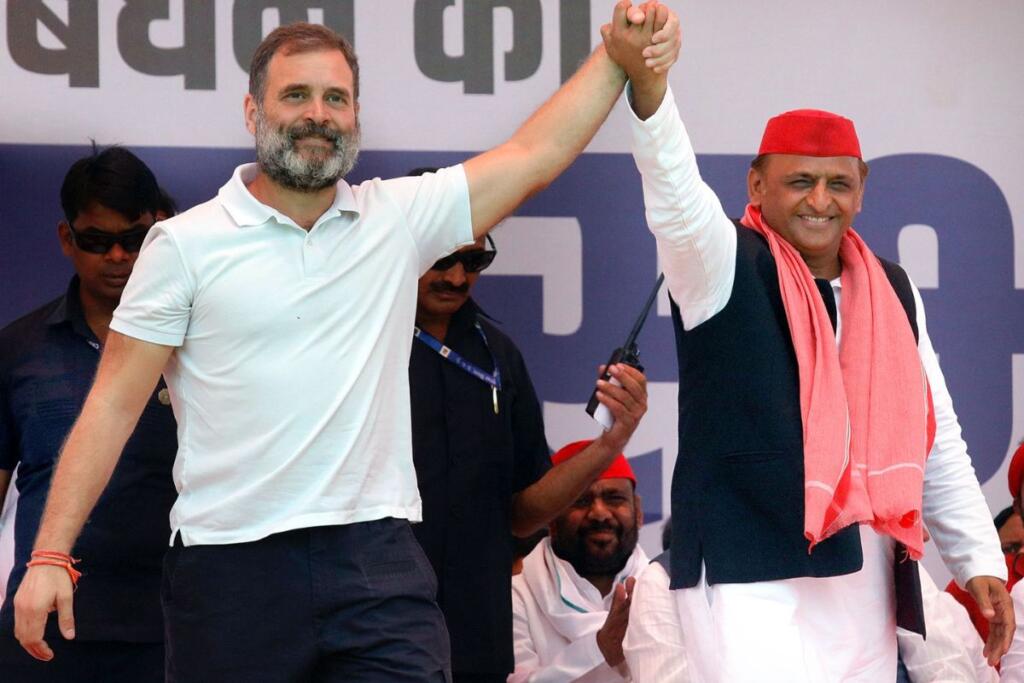In a surprising turn of events, the INDI Alliance has emerged as a formidable contender for government formation, even in the face of the BJP’s robust performance within the NDA. As the dust settled on the June 4th election results, a fresh landscape of possibilities materialized. Amidst the whirlwind of political activity, the INDI Alliance has positioned itself strategically, prepared to grasp the mantle of leadership. This unforeseen development marks a significant shift in the political landscape, signaling the potential for a new era. As stakeholders eagerly await the unfolding of events, the stage is set for a gripping saga of political maneuvering and negotiation in the pursuit of governance.
Election Results Overview
Defying exit poll predictions, the Opposition INDI alliance secured 232 seats, while the BJP-led NDA won 292 seats. To form a government, a majority of 272 seats is necessary. Though the BJP emerged as the largest single party, it did not achieve a majority on its own, opening opportunities for the INDI alliance.
BJP’s Reliance on Allies
The BJP’s seat count fell to 240, short of the 272 majority mark. This outcome is a setback for the party, which had aimed for a substantial win with the slogan ‘iss baar, 400 paar’. The TDP, with 16 seats, and the JD(U), with 12 seats, are now crucial for coalition-building. Prime Minister Narendra Modi and Union Home Minister Amit Shah have reached out to these potential allies, recognizing their importance.
INDIA Alliance’s Path to Power
The INDI alliance’s strategy now involves securing support from other parties to bridge the gap to a majority. With Congress winning 99 seats, the alliance is positioned to negotiate with smaller parties and independents. These discussions aim to form a coalition government capable of reaching the 272-seat majority.
Key Players and Negotiations
In this complex scenario, alliances and negotiations are essential. The TDP and JD(U) are in pivotal positions. Chandrababu Naidu, leader of the TDP, and Nitish Kumar, leader of the JD(U), are key figures in the ongoing discussions. Their support could shift the balance of power towards the INDI alliance.
INDIA Bloc’s Initiatives
As a significant player within the INDIA alliance, the Congress has initiated discussions with a multitude of parties, encompassing both those affiliated with and external to the NDA. These strategic endeavors, aim to garner sufficient backing to mount a formidable challenge against the BJP’s prevailing influence and pave the way for government formation. Through these dialogues, the Congress seeks to forge alliances, consolidate support, and foster unity among diverse political entities, thereby enhancing the coalition’s collective strength and bolstering its prospects of assuming power.
Real-World Examples of Coalition-Building
Throughout history, coalition governments have often materialized through shrewd political alliances. One such instance occurred in 1996 when the United Front, comprising regional parties, assumed power with external backing from the Congress, notwithstanding the BJP’s status as the largest single party. This maneuver showcased the efficacy of collaborative politics in navigating complex political landscapes. Similarly, the INDI alliance may adopt a comparable approach, leveraging strategic partnerships and external support to secure a parliamentary majority and establish governance. By drawing inspiration from past successes, the coalition aims to emulate the resilience and adaptability demonstrated by previous coalition governments, thereby enhancing its prospects for political ascendancy.
Conclusion
The INDI alliance, though currently trailing the NDA in seat count, remains a formidable contender. By leveraging negotiations and forming strategic alliances with key players like the TDP and JD(U), the INDI bloc aims to assemble the necessary majority. The political landscape remains fluid, with coalition-building efforts intensifying as both the NDA and the INDI alliance vie for control. With the right moves, the INDI alliance could still form the next government, demonstrating the critical role of alliances in Indian politics.
ALSO READ: Chandrababu Naidu’s Statement: Loksabha Elections
